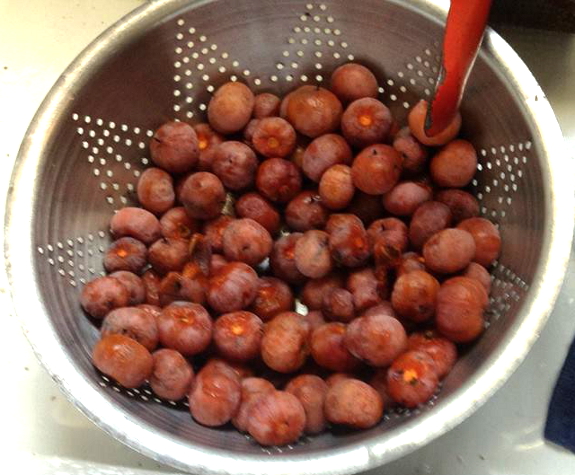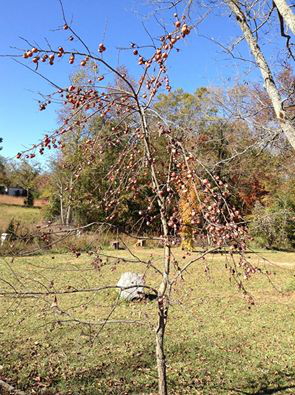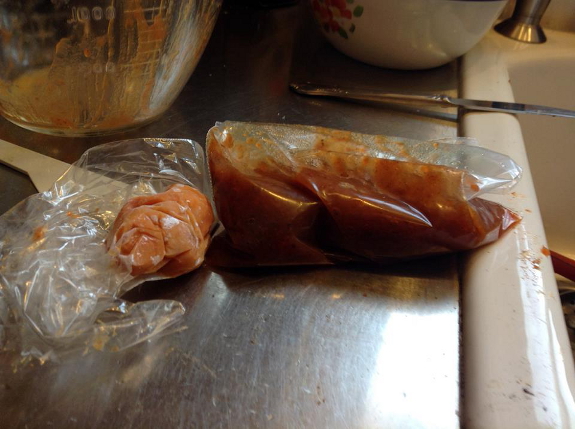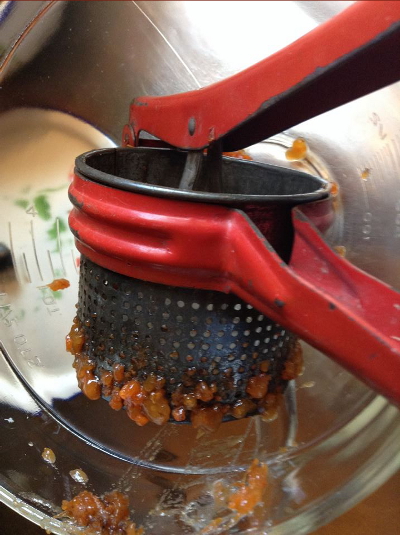
How to extract persimmon pulp

 About
forty years ago, when visiting friends near Dungannon, Virginia, I
asked what fruit were under the big tree in their front yard. That
was my first taste of persimmons. They were close in flavor to a date, and very sweet. I loved them.
About
forty years ago, when visiting friends near Dungannon, Virginia, I
asked what fruit were under the big tree in their front yard. That
was my first taste of persimmons. They were close in flavor to a date, and very sweet. I loved them.
Once, when hiking in Maryland
at a reserve reservoir for the DC water supply, I passed through a
field of young persimmons and gorged myself on the sweet fruit.
So when I moved to our
acreage in South Carolina I planted a foot-tall sapling. This is
its second year bearing, and it is loaded.
But what to do with so much
fruit? According to my online search, the skin is inedible (though
when I eat it, I eat the whole fruit and spit out the seeds). The
source I read recommended peeling the persimmons and scraping the pulp
off the seeds. An hour of this got me 0.8 ounces (see photo
below). After a complete search online I found only one article on
separating the pulp from skin and seed. A Mother Earth News
article recommended using an old fashioned potato ricer.

 I
rinsed a quart of the fruit in warm water and drained it. Then I
filled the bottom of the ricer with fruit and squeezed. Sure
enough, pulp oozed out of its holes. I quickly learned that a
steady but gentle pressure was needed and that three squeezes would get
all that would come. Between squeezes I stirred the fruit with a
table knife and poked at any that hadn't split open.
I
rinsed a quart of the fruit in warm water and drained it. Then I
filled the bottom of the ricer with fruit and squeezed. Sure
enough, pulp oozed out of its holes. I quickly learned that a
steady but gentle pressure was needed and that three squeezes would get
all that would come. Between squeezes I stirred the fruit with a
table knife and poked at any that hadn't split open.
The result was eight ounces
of fruit in an hour. If you notice in the picture, the fruit color
in the earlier attempt is lighter and clearer. That is because
the machine method will render some stem and seed pieces. These
don't affect the flavor.
As I was finishing, I looked
in the corner at the box with our steam juicer and a little light bulb
went off. It did a wonderful job juicing grapes. Why not
persimmons?
Want more in-depth information? Browse through our books.
Or explore more posts by date or by subject.
About us: Anna Hess and Mark Hamilton spent over a decade living self-sufficiently in the mountains of Virginia before moving north to start over from scratch in the foothills of Ohio. They've experimented with permaculture, no-till gardening, trailersteading, home-based microbusinesses and much more, writing about their adventures in both blogs and books.
Want to be notified when new comments are posted on this page? Click on the RSS button after you add a comment to subscribe to the comment feed, or simply check the box beside "email replies to me" while writing your comment.

You might be able to use one of [these guys]https://www.youtube.com/watch?v=Q89NZ66czM0 to make it go even faster. I haven't tried persimmons with ours, but it works well for berries and applesauce.
I'm always a little miffed that some of the pulp goes out with the seeds, but I imagine there might be a similar issue with the potato ricer? I find it's a little easier to swallow if I know that the 'wasted' pulp is actually going to the chickens (or goats)...
melina --- We actually have planted some persimmons for chickens, but they grow very slowly. Once they finally bear, we'll be sure to try them on the goats!
Jake --- Good idea on the food mill. We always use foley mills for applesauce, and had assumed that it wouldn't work on uncooked fruit. But persimmons are so very, very soft, it just might go through....